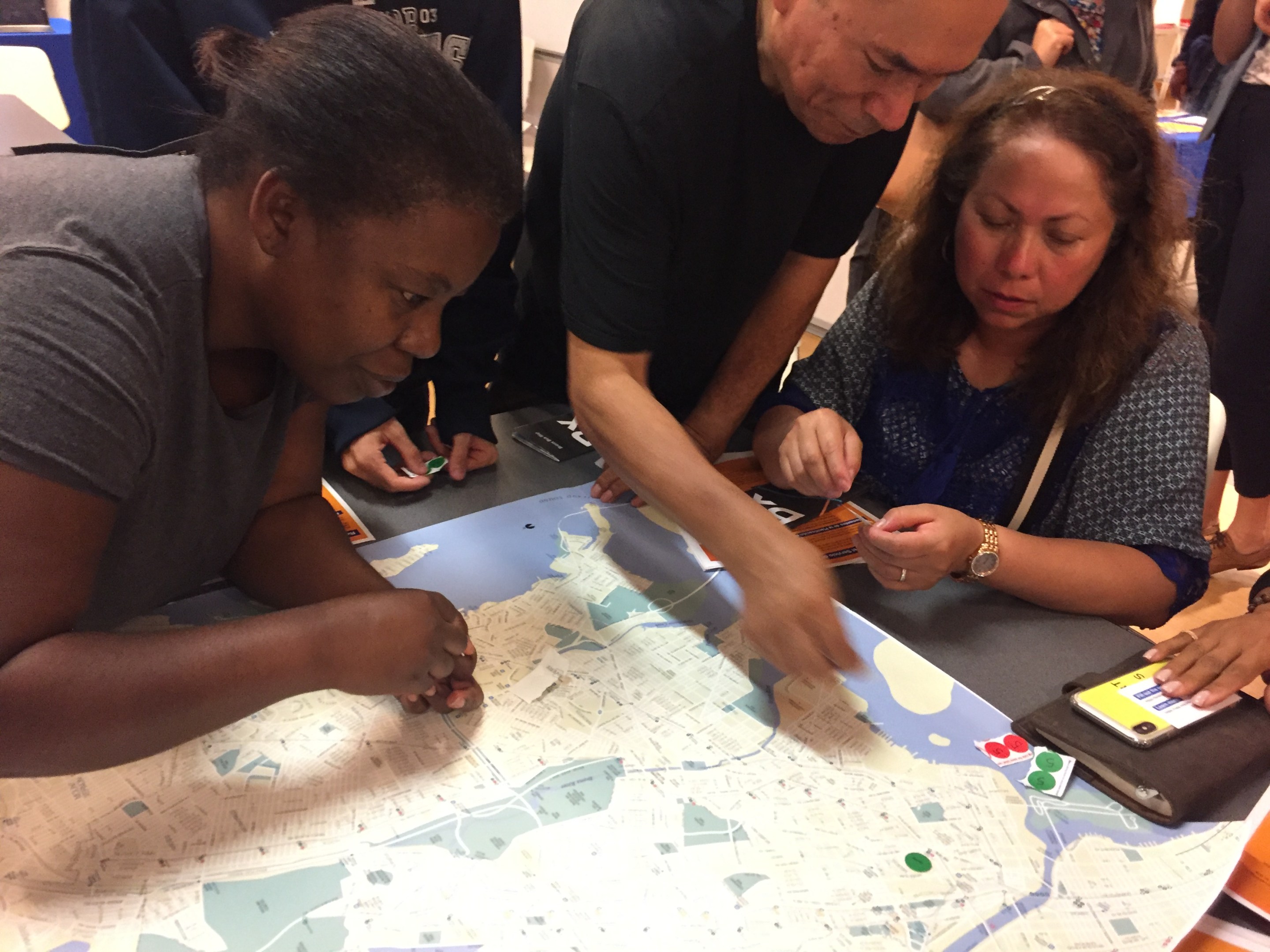More than 80 people turned out for last night's MTA workshop on the upcoming redesign of the Bronx bus network.
Not one of them was an elected official.
This is what transit has come to in arguably the most transit-dependent borough: MTA staffers and Department of Transportation officials journeyed to the Bronx to talk about fixing the borough's broken bus network, and seven dozen people had to turn out to advocate for themselves because their politicians aren't up to the job.
"They should have been present," said Linda Ray, 50, a secretary at NYCHA who commutes to the West Bronx via bus every day from her home at Westchester and Intervale avenues. "They really don't have a clue of what the average person that takes mass transportation goes through on a daily basis."
And what the average person goes through in the Bronx would horrify any elected leader (if he or she would get out of his or her car): The bus is the only way to get around, particular for cross-borough commuters, in a county where nearly 60 percent of households don't own a car, according to census data.
Yet many Bronx routes travel as slowly as five miles an hour.
"I don't think that they're going to care until it's an issue that's sexy, and I don't think buses are sexy to them right now," Ramona Ferreyra, 38, of Mott Haven, said of her local pols. "The majority of the people that do vote and use their voice are drivers, and work for the county [Democratic committee].
"When you have a community like mine, where 75 percent of people live in projects and only 10 percent of them vote, who the fuck cares?" she added.
The Thursday night meeting in The Hub was one of five being held in September and October to assist the MTA in revamping the Bronx bus network as part of subway and bus chief Andy Byford's "Bus Action Plan." The plan, unveiled in the spring, promises bus riders more frequent service, more efficient route designs, and greater priority on city streets. The Bronx is the first borough to go through the bus revamp gauntlet.
Ferreyra, a Riders Alliance member who's been active in its campaign for better bus service, welcomed the opportunity to talk about improving bus service. Still, she said, the MTA should have been more forthright about the very clear recommendations in its bus action plan.
"If there's already a plan in place, the plan should just be executed," she said. "It's frustrating to know that you [MTA] have a plan with priorities laid out and we're not talking about how that's going to be put in place."
You need leadership for that. And certainly, some Bronx elected officials have said positive things about the goals of Byford's plan. But they tend to only show up to fight when bus projects get in the way of they and their constituents' personal vehicles.
That was the case last year when a cadre of electeds — Bronx Democratic Party chair Assembly Member Marcos Crespo, Council Members Ruben Diaz, Sr. and Rafael Salamanca, and recently deposed State Senator Jeff Klein — tried to pressure DOT into scrapping bus lanes along the Bx6 Select Bus Service route.
And southern Brooklyn politicians, led by street safety pariah Sen. Marty Golden, did the same thing in getting the MTA to undermine its own SBS in that borough by objecting to eliminating parking for a dedicated bus lane.






